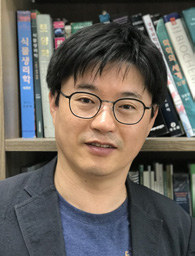
AL-1 (학술상)

1967년도 제정
Happiness from the Art of Natural Products

1967년도 제정
Sanghyun Lee
Department of Plant Science and Technology, Chung-Ang University, Anseong 17546, Republic of Korea
Throughout history, humans have long sought answers in nature to cure diseases and ensure survival. Natural product research is an academic journey aimed at scientifically identifying biological resources and applying them to sustain life and promote healing. My scientific journey is what I call Natural Product Research. Groundbreaking drugs such as penicillin, streptomycin, and tamoxifen were derived from natural products and have become major drivers of modern pharmacology and drug discovery. Since the 1980s, advances in isolation and structural identification techniques—especially LC-MS/MS and HPLC—have enabled the identification of natural compounds and the discovery of new drugs. My research has focused on developing foods, nutraceuticals, and medicinal materials by discovering bioactive compounds with antioxidant, anti-inflammatory, anti-diabetic, and immune-enhancing properties from short-cycle forest plants.
However, large pharmaceutical companies have come to prefer synthetic compounds or biologics due to the complex structures of natural products, their low yields, and challenges in commercialization. In addition, the overexploitation of natural resources and the decline in biodiversity threaten the sustainability of natural product research. Furthermore, the gap between mechanistic analysis and clinical application remains a major challenge. The convergence of omics technologies and AI is enabling more precise analysis of in vivo mechanisms of action and accelerating drug discovery in terms of both speed and accuracy. Meanwhile, the rise of synthetic biology is dramatically enhancing the potential for the commercialization of natural products. The climate crisis and the need to conserve biodiversity now point the way forward for natural product research: sustainable resource utilization, ethical extraction, and collaboration with local traditional communities.
Today's natural product researchers must adopt an integrated perspective that encompasses advanced analytical technologies and bioethics. This is essential not only for scientifically grounded functional validation and international credibility but also for bridging the gap between industrialization and public health. Natural products still hold great promise. To realize their full potential, deeper research, greater social empathy, and strategic technological convergence must come together. The K-Milk Thistle localization project involved years of research to domesticate milk thistle and led to the development of a high-silydianin variety called Silyqueen, for which a plant patent has been registered. The launch of K-Milk Thistle as a national brand—alongside K-Pop and K-Beauty—laid the foundation for entering both domestic and global markets. By identifying interactions and genetic diversity among silymarin complex components, the project succeeded in differentiating high value-added functionalities.
Natural Product Chemistry is a science, an art, and a way of life. I read nature’s messages and translate them into health, industry, and human well-being. My research leads to industrialization, my success is returned to society, and my work serves as a key to unlocking the future for younger generations.
However, large pharmaceutical companies have come to prefer synthetic compounds or biologics due to the complex structures of natural products, their low yields, and challenges in commercialization. In addition, the overexploitation of natural resources and the decline in biodiversity threaten the sustainability of natural product research. Furthermore, the gap between mechanistic analysis and clinical application remains a major challenge. The convergence of omics technologies and AI is enabling more precise analysis of in vivo mechanisms of action and accelerating drug discovery in terms of both speed and accuracy. Meanwhile, the rise of synthetic biology is dramatically enhancing the potential for the commercialization of natural products. The climate crisis and the need to conserve biodiversity now point the way forward for natural product research: sustainable resource utilization, ethical extraction, and collaboration with local traditional communities.
Today's natural product researchers must adopt an integrated perspective that encompasses advanced analytical technologies and bioethics. This is essential not only for scientifically grounded functional validation and international credibility but also for bridging the gap between industrialization and public health. Natural products still hold great promise. To realize their full potential, deeper research, greater social empathy, and strategic technological convergence must come together. The K-Milk Thistle localization project involved years of research to domesticate milk thistle and led to the development of a high-silydianin variety called Silyqueen, for which a plant patent has been registered. The launch of K-Milk Thistle as a national brand—alongside K-Pop and K-Beauty—laid the foundation for entering both domestic and global markets. By identifying interactions and genetic diversity among silymarin complex components, the project succeeded in differentiating high value-added functionalities.
Natural Product Chemistry is a science, an art, and a way of life. I read nature’s messages and translate them into health, industry, and human well-being. My research leads to industrialization, my success is returned to society, and my work serves as a key to unlocking the future for younger generations.

AL-2 (기창(基倉)과학상)

기창(基倉) 한태룡 전임회장의 후원으로 2010년도 제정
Recent Trends and Technological Advancements in Plant Proteomics: From DDA to 4D-DIA

기창(基倉) 한태룡 전임회장의 후원으로 2010년도 제정
Sun Tae Kim
Department of Plant Bioscience, Life and industry Convergence Research Institute, Pusan National University, Miryang 50463, Republic of Korea
Proteomics has become a vital tool in plant science, providing critical insights into the molecular mechanisms governing growth, development, and stress responses. Traditional data-dependent acquisition (DDA) mass spectrometry enabled deep protein identification but suffers from limited reproducibility and a bias toward abundant peptides. The advent of data-independent acquisition (DIA) has addressed these limitations by systematically fragmenting all peptide ions, allowing for highly reproducible and quantitative proteome profiling. In rice (Oryza sativa), DIA has significantly improved the detection of low-abundance regulatory proteins involved in stress signaling and adaptation. The recent development of four-dimensional DIA (4D-DIA), which integrates ion mobility as an additional separation dimension, further enhances resolution, sensitivity, and proteomic coverage. This approach enables the quantification of over 10,000 proteins in a single run and supports detailed analysis of post-translational modifications, such as phosphorylation, which are crucial in plant immunity and environmental stress responses. When combined with advanced computational tools, these next-generation technologies are transforming plant proteomics, accelerating systems-level understanding of plant biology. Together, DDA, DIA, and 4D-DIA are enabling precision breeding strategies for developing climate-resilient and high-yielding plant cultivars, offering new avenues for sustainable agriculture.

AL-3 (HAN BIO Award)

한바이오 그룹 후원으로 2022년도 제정
Protopanaxadiol Attenuates Palmitate-Induced Lipotoxicity and Restores Pancreatic β-Cell Function in INS-1 Cells

한바이오 그룹 후원으로 2022년도 제정
Ki Sung Kang
College of Korean Medicine, Gachon University, Seongnam 13120, Republic of Korea
Free fatty acid (FFA)-induced lipotoxicity plays a critical role in the dysfunction of pancreatic β-cells, a key factor in the development of diabetes. In this study, we evaluated the protective effects of ginsenosides against palmitic acid (PA)-induced β-cell death and impaired glucose-stimulated insulin secretion (GSIS) using INS-1 pancreatic β-cells. Through screening, we identified protopanaxadiol (PPD) as a potent therapeutic candidate that effectively prevented PA-induced cytotoxicity and GSIS dysfunction. The protective effects of PPD appeared to result from the reduction of apoptosis and intracellular lipid accumulation. Mechanistically, PPD attenuated the PA-induced increase in apoptotic markers, including B-cell lymphoma-2-associated X protein (Bax), B-cell lymphoma 2 (Bcl-2), cleaved poly (ADP-ribose) polymerase (PARP), and cleaved caspase-3. Furthermore, PPD restored insulin secretion by enhancing the activation of key signaling molecules such as phosphatidylinositol 3-kinase (PI3K), peroxisome proliferator-activated receptor γ (PPARγ), insulin receptor substrate-2 (IRS-2), protein kinase B (Akt), and pancreatic and duodenal homeobox-1 (PDX-1). Collectively, these findings suggest that PPD alleviates PA-induced lipotoxicity and β-cell dysfunction by modulating apoptotic pathways and promoting critical insulin signaling cascades. Therefore, PPD holds promise as a therapeutic agent for preventing or mitigating β-cell dysfunction in metabolic diseases such as type 2 diabetes.
